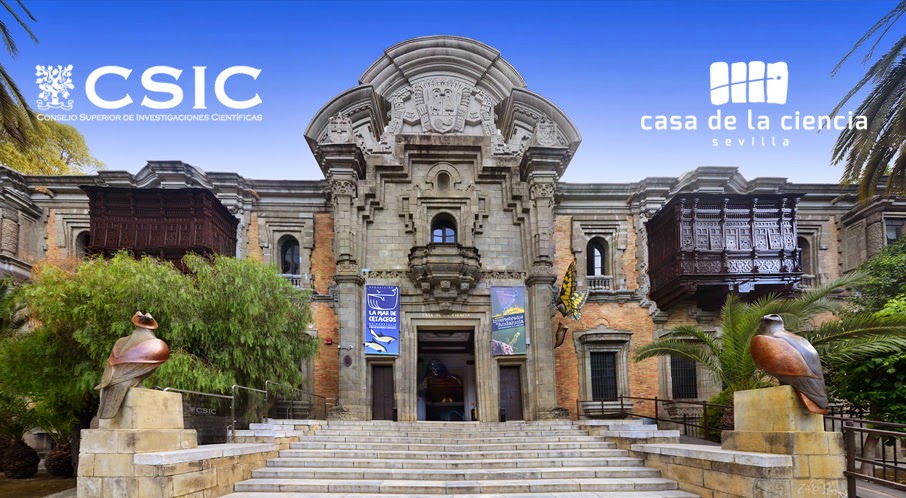An ecosphere, seen above and below, is a sealed glass aquarium in which a
self-sustaining ecosystem exists. Algae, bacteria, micro-organisms and shrimp share the space, and all that is needed for the
ecosystem to survive - which it can do for a number of years - is an indirect source of light and an agreeably mild temperature. England in July would do nicely.
The ecosphere is a closed system, which by definition means energy is free to leave and enter but matter must remain confined within.
While ample parallels can be drawn between this miniature system and Earth, matter can still enter our system (the Chicxulub impactor, being a modest example), and leave it (as in the estimated 300,000
pieces space junk orbiting Earth, debris which Australian scientists have their sights set on to soon start lasering).
A bit of bio-history
A bit of bio-history
The ecosphere was conceived in it its simplest form in
the early 1980s. Joe Hansen of NASA’s Jet Propulsion Lab and other bio-scientists
discovered that, as the Ecosphere website puts
it: 'diverse colonies of microbes, alga’s, and higher life forms (colonies)
could persist apparently indefinitely in closed lab beakers.'
A succinct breakdown of the process is given on the site: 'Plants - microscopic, stringy green algae - produce oxygen through photosynthesis. The half-inch red shrimp use the oxygen and exhale carbon dioxide, the raw material of photosynthesis. Bacteria and other microscopic creatures feed on the shrimp’s wastes, converting it into fertilizer for the algae, which are eaten by the shrimp.'
Among other things, the results had implications for the possibilities of long-distance space flight. Of the initial experiments, Hanson said the beakers had 'pretty much served the purpose I had in mind...The biology community in general believed that closed ecosystems smaller than the planet probably were not possible.’ Once that point had been proven, the miniature systems were produced for museums and private collections.
'Above that, I guess, they make a bisque and not an ecosystem'
Carl Sagan, cosmologist, astronomer and sender of the Voyager Golden Records, in writing about receiving his own
ecosphere through the post, was quick to highlight the elemental symbiosis of
its inhabitants:
'They breathe each other’s waste gases.
Their solid wastes cycle also, among plants and animals and microorganisms. In
this small Eden
He writes of being enthralled by the individual
trajectories and motivations of the red shrimp, and comments a little more wryly about
the required ambient temperature:
'All I have to do is make sure that
they’re not in too much light or too long in the dark and that they’re always
at temperatures between 40 and 85 degrees Fahrenheit. (Above that, I guess,
they make a bisque and not an ecosystem.)'
 |
| Carl Sagan (on Earth) |
'The shrimp’s existence is much more
tenuous and precarious than that of the other beings. The algae can live
without the shrimp far longer than the shrimp can live without the algae. The
shrimp eat the algae (and the microorganisms), but the algae mainly eat light.
Unlike an aquarium, this little world is a closed ecological system. Light gets
in, but nothing else - no food, no water, no nutrients. Everything must be
recycled. Just like the Earth. In our larger world, we also - plants and animals
and microorganisms - live off each other, breathe and eat each other’s wastes,
depend on one another. Life on our world, too, is powered by light. Light from
the Sun, which passes through the clear air, is harvested by plants and powers
them to combine carbon dioxide and water into carbohydrates and other
foodstuffs, which in turn provide the staple diet of the animals.
Our big world is very like this little
one, and we are very like the shrimp. But there is at least one major
difference: Unlike the shrimp, we are able to change our environment. We can do
to ourselves what a careless owner of such a crystal sphere can do to the
shrimp. If we are not careful, we can heat our planet through the atmospheric
greenhouse effect or cool and darken it in the aftermath of a nuclear war. With
acid rain, ozone depletion, chemical pollution, radioactivity, the razing of
tropical forests and a dozen other assaults on the environment, we are pushing
and pulling our little world in poorly understood directions. Our purportedly
advanced civilization may be changing the delicate ecological balance that has
tortuously evolved over the 4-billion-year period of life on Earth.'
Sagan closes with a fairly damning, if gently worded,
admonishment of our species:
'It should not be impossibly difficult.
Birds - whose intelligence we tend to malign - know not to foul the nest.
Shrimps with brains the size of lint know it. Algae know it. One-celled
microorganisms know it. It is time for us to know it too.'
The ecosphere in the science museum in Seville is similar to those on display in exhibits in Tokyo and New
York La
Casa de la
Ciencia , the sphere can be found tucked into the corner of a
hall shared with the cetaceans of Andalucia. More about those soon...






